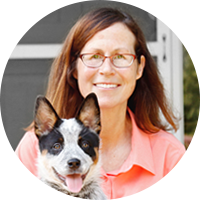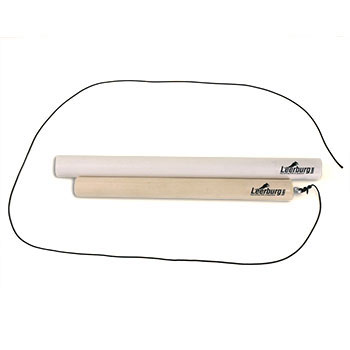April 26, 2011
One of the most common questions I get is, “Our puppy is very mouthy, is always chewing on us or the kids. What should I do?”
Full Question:
My puppy is very mouthy. It grabs my kids, my arms, my pants. What should I do to stop this? 
 Ed's Answer:
Ed's Answer:
Many puppies younger than 4 or 5 months (especially in working breeds) are very mouthy. They bite pant legs, arms, rags, kids etc. They are not doing this because they are mean. The fact is that 99.9% of them probably have a pretty sound temperament. When a pup does this it is displaying prey drive. If you would like to read more about prey drive go to the articles I have written on my web site on the Drives of Protection Training. Even if you have no interest in protection training you will learn what prey drive is from this article.
This mouthyness goes away on its own when most dogs are 4 to 5 months old. But if you have a little 10-week-old alligator that can seem like an eternity. Puppies can be taught not to bite the handler or family members by simply saying "NO or PHOE" and then grabbing them by the scruff of the neck and shaking them. You usually have to shake them until they scream. Often a light shake only makes them think you are playing with them and they growl and try grabbing you. So if this happens you are not being forceful enough. It normally only takes 3 to 5 times of doing this properly to teach the pup that when you say "NO or PHOE" it means stop biting. Doing this also helps establish you as the pack leader. Dogs are instinctively pack animals. By using your head and a very limited amount of force or pressure you become the unquestionable pack leader. This helps control any later dominance problems with the dog.
People who plan on doing protection training with their dogs are often concerned that shaking to stop ankle and hand biting will diminish the dog’s protection work. This does not happen. As long as the handler is doing the things we show in our video Bite Training Puppies, there will be no problem. Basically a puppy needs to learn what is and what is not a "prey item." Even in the wild a mother wolf will only put up with this rough play against her for only so long. Then she stops it by shaking the pup by the neck. So what I tell people is that after they have corrected the dog, give it a minute and get the ball on a string out, (see my article on why playing with a ball on a string is so important for a puppy), or get the hand towel out and play tug. Let the pup win the tug and drag it off. This teaches him what is prey and what is not prey.
This mouthyness goes away on its own when most dogs are 4 to 5 months old. But if you have a little 10-week-old alligator that can seem like an eternity. Puppies can be taught not to bite the handler or family members by simply saying "NO or PHOE" and then grabbing them by the scruff of the neck and shaking them. You usually have to shake them until they scream. Often a light shake only makes them think you are playing with them and they growl and try grabbing you. So if this happens you are not being forceful enough. It normally only takes 3 to 5 times of doing this properly to teach the pup that when you say "NO or PHOE" it means stop biting. Doing this also helps establish you as the pack leader. Dogs are instinctively pack animals. By using your head and a very limited amount of force or pressure you become the unquestionable pack leader. This helps control any later dominance problems with the dog.
People who plan on doing protection training with their dogs are often concerned that shaking to stop ankle and hand biting will diminish the dog’s protection work. This does not happen. As long as the handler is doing the things we show in our video Bite Training Puppies, there will be no problem. Basically a puppy needs to learn what is and what is not a "prey item." Even in the wild a mother wolf will only put up with this rough play against her for only so long. Then she stops it by shaking the pup by the neck. So what I tell people is that after they have corrected the dog, give it a minute and get the ball on a string out, (see my article on why playing with a ball on a string is so important for a puppy), or get the hand towel out and play tug. Let the pup win the tug and drag it off. This teaches him what is prey and what is not prey.
83% (5 out of 6)
respondents found this answer helpful


Can't find what you're looking for?







